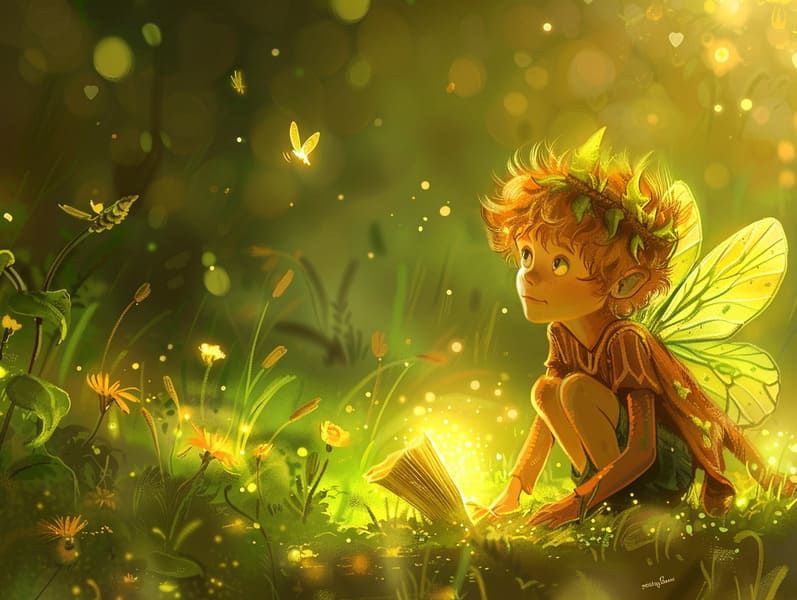
Classic fairy tales have old origins. These tales have been whispered from one generation to the next well before they were ever recorded. They arose from a variety of traditions, including Western traditions. They were initially narrated among older generations, often carrying themes and messages relevant to the societal norms and beliefs of the time.
Jacob and Wilhelm Grimm, Jacob and Wilhelm (the Grimm brothers), were among the first to compile and publish many of these beloved narratives. Their collection, "Grimm's Story Collection," included narratives like "Cinderella," "The Story of Hansel and Gretel," and "Snow-White and Rose-Red," which have since become mainstays in the world of classic fairy tales. Similarly, the Danish author's fanciful fairy tales, such as "The Sea Maid," and "The Ugly Duckling," have touched hearts worldwide, cementing their place in the pantheon of classic fairy tales.
Despite their age, traditional fairy tales remain as meaningful as ever, especially as children's bedtime stories. These fantastical tales are now available in multiple formats, including beautifully illustrated books, delightful animations, and free fairy tales online.
Their continued relevance can be linked to several whimsical characteristics:
Life Lessons: Old fairy tales often present important moral lessons. Tales like "The Shepherd Boy and the Wolf" teach the value of truthfulness, while "The Tortoise and the Hare" stress the virtues of perseverance and unassuming nature. These narratives offer young readers clear distinctions between correct and incorrect, forming their moral compass in a mild yet impactful way.
Empathy and Understanding: Ancient fairy tales frequently depict beings facing difficulties and adversities, prompting children to comprehend with their struggles and champion their triumphs. For instance, "Beauty's Beast" illustrates the value of seeing beyond looks to acknowledge the inner core of a person, cultivating awareness and knowledge.
Cultural Comprehension: Many classic fairy tales are imbued with the cultural contexts from which they emerged. Understanding these stories can provide intriguing perspectives into different ways of life, fostering a sense of world respect and recognition.
Fantasy and Innovation: The supernatural elements in timeless fairy tales—talking beasts—stimulate children’s fantasy worlds. These fairy tales take readers to fantasy realms, firing up creative ideas and a sense of fascination that stays a lifetime.
Old fairy tales are not only entrancing but also teaching. They act as whimsical tools in nurturing various brain and heart skills in kids. When ancient fairy tales are narrated, they enhance verbal skills by teaching new lexicon and sophisticated sentence structures. This practice also advances hearing perception and mindfulness, as the young track the narrative, keen to see what happens next.
Furthermore, exploring the themes and characters of timeless fairy tales can cultivate logical thinking and problem-solving abilities. Children learn to recognize patterns, predict happenings, and grasp cause and effect. These talks also aid the young convey their thoughts and feelings, advancing their emotional intelligence.
In today’s information age, the existence of digital fairy tales has made these narratives more attainable than ever. Digital sites and software feature here huge assortments of famous fairy tales that can be explored or listened through anytime, anywhere. Fairy tales narrated are particularly well-liked, presenting an fun way for kids to relish these enchanting tales. Sound books and voiced videos carry characters and settings to life, often paired with mesmerizing melodies and melodies that raise the storytelling experience.
The unending appeal of ancient fairy tales lies in their ability to adjust to present eras while keeping hold of their main lessons. Contemporary reinterpretations of these tales often show more multicultural protagonists and modern settings, making them relevant to today’s audience. However, the fundamental themes of fearlessness, generosity, and fair-mindedness remain unchanged, continuing to influence children of all ages.
Traditional fairy tales also offer a sense of serenity and knownness. They bestow a organized narrative with a clear beginning, middle, and end, often wrapping up with the wrap-up of conflicts and the triumph of rightness over wrongness. This constancy can be reassuring for young readers, yielding a sense of steadiness in an fluid world.
Classic fairy tales continue to mesmerize and educate new generations, maintaining their spell and pertinence in modern society. As children's night stories, they confer upon a perfect blend of allure and teaching, nurturing moral values, empathy, and creativity. The proliferation of internet fairy tales and the well-received status of fairy tales recited assure that these classic fairy tales remain attainable to new generations.
By protecting and recounting these narratives, we continue to pay tribute to the rich tapestry of cultural heritage and cultural heritage. Whether you are accessing a gorgeously illustrated book, discovering a web-based library, or playing an read-aloud book, the majesty of famous fairy tales is always within reach. These stories show us of the continued spell of fairy tales and its ability to unite us across centuries and lands.
Whether you are browsing a vividly illustrated book, discovering a electronic collection, or listening on an sound book, the fascination of bedtime fairy tales is always within reach.
These fairy tales point out of the immortal presence of storytelling and its ability to unite us across epochs and places, creating a bond that captivates and teaches alike.